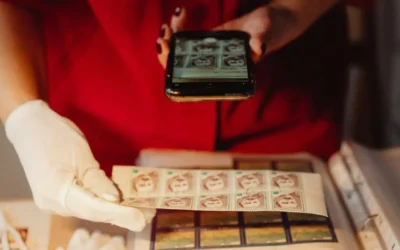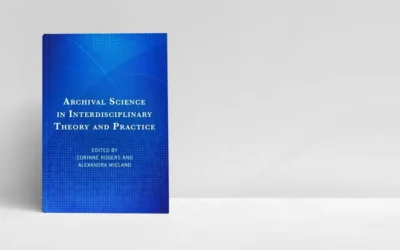Stewards of the Past, Guardians of the Future
Margot Note
In archiving, preservation is not an end but a means to provide continued access to these historical treasures.
Archivists determine how original materials can best be preserved within best-practice standards. Preservation activities include condition monitoring, creating physical and digital surrogates, and implementing environmental controls where materials are processed, used, and stored.
Preservation is a multifaceted endeavor beyond simply preventing materials from deteriorating. Archivists understand the importance of prolonging primary sources’ lives while ensuring these materials remain accessible and meaningful to researchers, scholars, and the broader public. Preservation bridges the past and the future, allowing the voices and stories of bygone eras to resonate with contemporary and future audiences.
Condition Monitoring
One of the foundational aspects of preservation is condition monitoring. Archivists are trained to assess the state of primary source materials and to identify signs of degradation or damage. Regular inspections, often involving detailed examinations of physical items, are essential to catch issues early. These problems can include brittle paper, faded ink, mold growth, or physical damage from improper handling or storage.
By monitoring the condition of materials, archivists can take action to address issues. This may involve the repair and conservation of damaged items, the rehousing of materials in acid-free enclosures, or the implementation of environmental controls to mitigate deterioration. Condition monitoring is a proactive approach that enables archivists to intervene before materials reach a state of irreversible degradation.
Digital Surrogates
Creation of physical and digital surrogates is another crucial aspect of preservation. Archivists understand that some primary source materials are fragile, rare, or highly valuable, making their handling and exposure to light or environmental factors risky. In such cases, archivists may create surrogate copies, either in physical or digital form, to reduce the need for handling the originals. Surrogates allow researchers to access material’s content while minimizing the original risk.
Physical surrogates, such as microfilm or digitized copies, offer the advantage of replicating the look and feel of the original materials to a certain extent. These copies are precious for visually significant documents, such as historical photographs or handwritten letters. Digital surrogates, on the other hand, provide the added benefits of enhanced searchability and accessibility. Archivists disseminate them widely; the materials are valuable for researchers working remotely.
Creating surrogates is a careful and well-documented process that must maintain the integrity and authenticity of the original materials. Even when access to the originals is limited, surrogates’ content and historical significance can be widely shared and utilized.
Environmental Controls
Environmental controls play a significant role in preservation efforts. Archivists understand the impact of temperature, humidity, light, and pollutants on the stability of materials. Therefore, they implement stringent environmental controls in areas where materials are processed, used, and stored. These actions include maintaining stable temperature and humidity levels to prevent physical deterioration and the growth of mold or pests.
Light levels are managed to protect materials from fading and light-induced damage. Archivists also filter out pollutants and particulates from the air to prevent materials from deteriorating due to exposure to airborne contaminants. In addition to protecting the materials themselves, these environmental controls create a safe and stable environment for researchers and archivists working with the materials.
Preservation Actions
Preservation is a cornerstone of archival practice, reflecting the dedication of archivists to safeguard the past for the present and future benefit. Archivists serve as stewards of primary source materials, working to prolong their lives, create surrogates, and implement environmental controls. Preservation is not a solitary endeavor but takes place within a framework of legal and ethical guidelines, ensuring that archival materials are protected and accessible. Through these efforts, archivists continue to bridge the gap between history and contemporary society, enabling users to explore, learn from, and cherish the stories and experiences of those of the past.
Never miss another post. Subscribe today!
Similar Posts
Ensuring Long-Term Access to Digital Archives
Long-term preservation is essential to ensure digital archives remain accessible and usable.
5 Best Practices for Personal Digital Archiving
Archivists have developed best practices for organizing and maintaining personal digital archives, safeguarding digital legacies for future generations.
Interview with the Editors: Wieland and Rogers on Interdisciplinary Archival Science
Alexandra Wieland and Corinne Rogers co-edited Archival Science in Interdisciplinary Theory and Practice. My interview with them is below.
The Importance of Personal Digital Archiving (Plus Steps to Get Started)
Archivists often help individuals manage and preserve digital files of personal significance.




Leave a Comment
Comments are reviewed and must adhere to our comments policy.
0 Comments